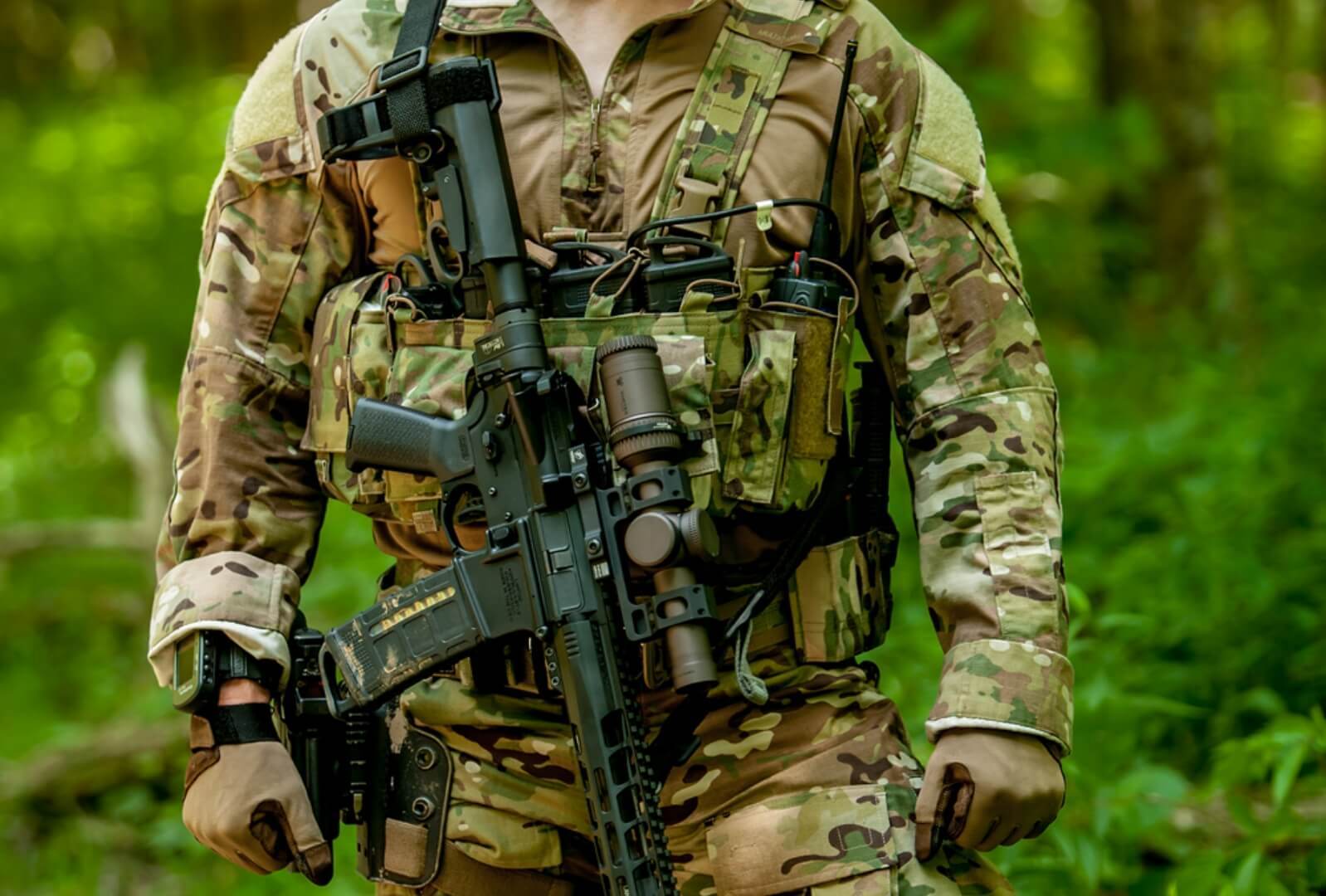Essential Kit for Long-Range Patrol: What You Need (and What to Leave Behind)
Posted by Warrior Poet Society on Jun 12th 2025
I recently geared up to teach our Introduction to Long-Range Patrol class, and I wanted to walk through the essential kit you’ll need in the field. Whether you're a civilian, LEO, or military, there’s serious value in knowing how to move undetected, survive off-grid, and be prepared for the unknown.
Some of you may be here to make sure I got everything right, and guess what, I did. I’m batting a thousand here. But if you’re here because you want to be able to disappear into the woods, evade capture, reconnoiter land and take land, and all those cool man skills that make us good protectors, then you have come to the right place.
This gear list is built for real-world function. Some of it you might agree with, some of it might get you fired up in protest—and that’s the point. We’re here to get better together. Even if you never plan to run a recon op in a real-world setting, mastering long-range patrol principles builds the protector mindset. It’s not just about gear—it’s about being capable.
The tech might evolve. The terrain might change. But the principles of patrol? Those are timeless.
Let’s get into it.
Battle Rifle Setup
Your rifle is your lifeline.
• Barrel Length: Go at least 14.5"–16”. You're not clearing rooms—you're reaching out, but you still want to have good maneuverability, especially if you’re in some thick brush.
• Optics: You want something with magnification. For our class, I run a red dot with a 6x magnifier that I can flip out of the way. No LPVO for this course, but in desert terrain, I’d definitely consider it.
• Additional Attachments: IR laser, white light, sling, and tourniquet (using our stock sock).

Chest Rig
This is the command center on your chest. On long patrols, I’m not usually carrying armor, but if the situation requires it then I’ll adjust accordingly—this goes for all the gear listed below.
• Medical kit
• Pre-laminated (for waterproofing) maps and map pens
• MGRS protractor
• Extra mags (4 total, enough to break contact—not fight a war)
• Radio with spare battery
• Lensatic compass
• Gloves
• GPS
• White light
• Multi-tool (non-negotiable)
• Extra batteries
Field Apparel
Don’t cheap out here. You don’t want the discount-bin, Multicam special. You might need to wear the same pants for two weeks, so comfort and durability are essential. Buy once, cry once. You don’t need $500 Cyre’s, but you do need to purchase quality items from a reputable brand. I like the Down Range Shirt and Pants that we carry on our website for the following reasons:
• Breathable, reinforced material with moisture-wicking, stretch fabric where you need it
• Magnetic pocket closures for stealth
• Integrated kneepad option (included with Down Range Pants)
• Adjustable cuffs for heat, bugs, or cold
Night Vision and Helmet Setup
Night vision is a superpower, and for patrolling in the darkness, night vision is your buddy.
• Helmet: Ops-Core ballistic
• NVGs: DTNVGs with Wilcox G24 mount
• Comms: Ops-Core Amps with radio-specific downlead cable and push-to-talk
• Extras: IR strobe, helmet-mounted light, upgraded helmet pads for comfort

Backpack Loadout
You're 100% going to need a backpack. It needs to be big enough to carry all that you need, but not too big that you start filling it with stuff you don’t. Also, you need to prioritize how you load your pack so you’re not killing your back with improper weight distribution. You want your pack to be cinched tight to your body as it folds around you with the weight situated high up near your shoulders.
• Pack: Eberlestock with a kidney strap
• Water: Camelbak or bladder, collapsible water bottle, water filter, and iodine tablets
• Elements Protection: Poncho (multi-use), emergency blanket, boonie hat, and
bug net
• Tools: E-tool (doubles as a toilet seat), field knife, headlamp, signal mirror, 550
cord, and a whistle (in case you’re all out of ammo and you hear the banjos in the
distance)
• Clothing: Extra socks, shirt, and base layers
• Sleep System: Waterproof bivvy sack, poncho liner, and sleeping pad
(mandatory)
• Power: Solar charger, power bank, and charging cords
• Emergency Comms: Satellite phone
• Food: MREs and dry meals—no open flame cooking here
• Hygiene: Toilet paper, toothpaste, and other hygiene
What NOT to Bring on Patrol
Here’s where I expect the internet to argue. But I’m standing by these cuts:
1. War Belt: Looks cool, but it’s dead weight. Chafes, gets in the way of your pack, and the pistol is mostly irrelevant in a patrol context.
2. Tomahawk: Too loud, too heavy, and leaves a trace. Cool gift, not practical.
3. Open Flame Cooking Kit: Smell, heat signature, visibility. In a patrol environment, fire is a no-go. Stick to cold meals.
Conclusion
This isn’t about bringing everything. It’s about bringing what matters. Ounces make pounds, and pounds equal pain. Your loadout should be METT-TC dependent—Mission, Enemy, Terrain, Troops, Time Available, and Civilian Considerations. Adapt your kit to your mission, your terrain, and your context.
What did I miss? What would you cut or add?
Train hard. Train smart. And get your kit ready.

